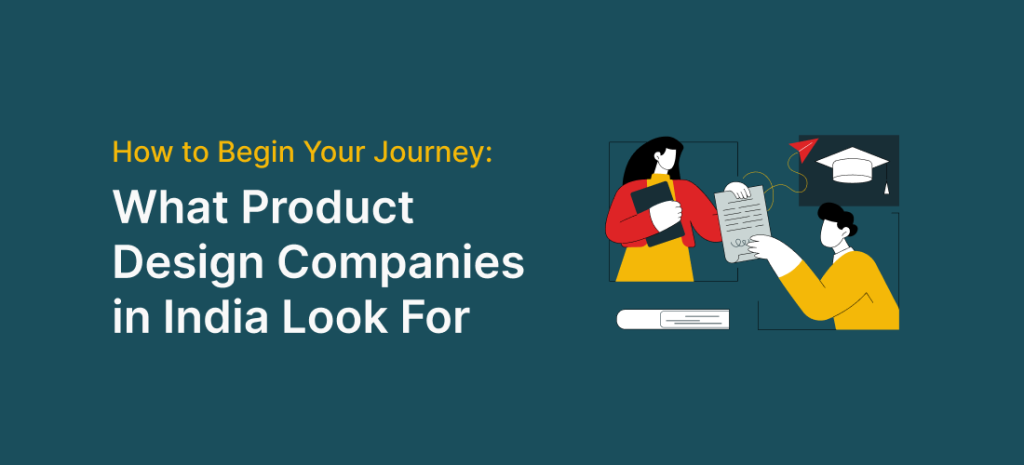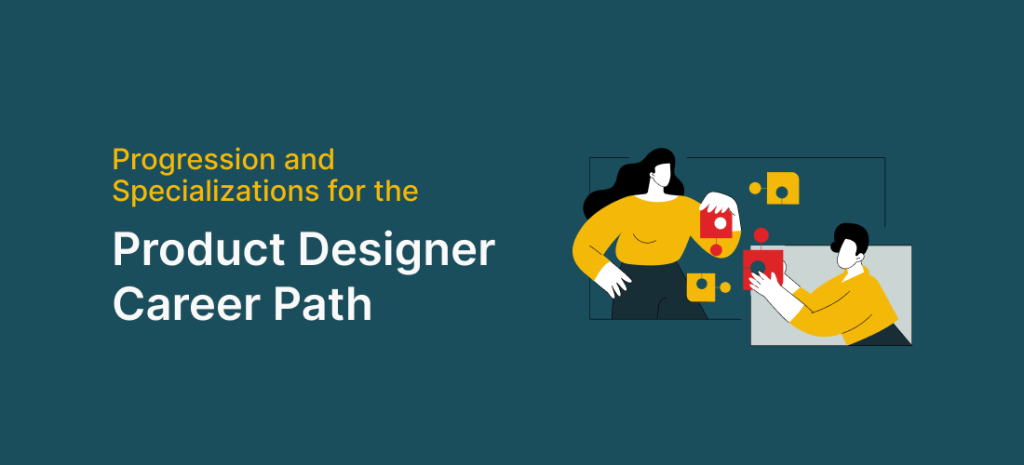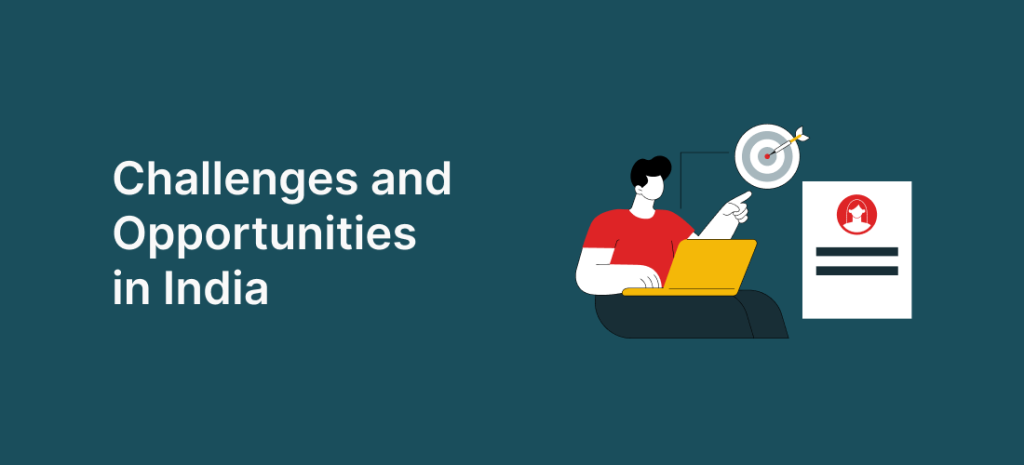
Jul 26, 2024

Product design, the art and science of creating products, plays a deep role in our technology-driven society. It affects our daily lives in more ways than we can imagine. Everything we use, needs to function in a certain way for it to be considered useful and ergonomic. Which means there is a rise in career opportunities in the market for product designers. With its burgeoning startup ecosystem and increasing emphasis on user experience, we are witnessing a growing demand for skilled product designers in India.
Whether you’re a recent graduate, a career switcher, or simply passionate about creating impactful products – Let’s break down the world of product design so you’ll know how to get recruited into the best product design companies in India. Use this blog as a roadmap or a manual on how to carve a successful career in this dynamic industry.
Let’s dive into the world of product design!
Think of it like this – a product designer could be likened to an architect – a strategic planner of a product’s user experience – how a product will be received, used, and handled by a target user. So, a product designer is responsible for crafting intuitive, user-centric solutions that meet a number of objectives. Their role involves a blend of creativity, empathy, and strategic thinking.
For a market like India, the role comes with added weightage and responsibilities. We are to note that the market, the audience and the user base in India is a tough nut to crack. Here trends are always shaping, evolving and changing and as product designers in India, you will always be on your toes to keep up with the next oncoming wave.
Product designers bridge the gap between users and businesses. Their role is to conduct in-depth research to understand user needs, behaviors, and pain points. Armed with these insights, they create user-centric designs, often collaborating closely with engineers, marketers, and other stakeholders.
First the basics, differentiate product design from UI UX design. They are 2 different areas of expertise. While UI (User Interface) and UX (User Experience) design are integral components of product design, the latter encompasses a broader scope. Product designers not only focus on the look and feel of a product but also consider its overall functionality, usability, and strategic fit within the market.
Product designers play the game from start to finish. They are present from ideation to launch and then for reiterated designs and continued support. As a product designer your role will demand you to contribute to shaping the product’s direction, ensuring it delivers value to users and drives business success.

Always begin any journey by building a solid foundation. With this career path as aspiring product designers in India, your foundation is in understanding design principles. The core of any study is to know the basics like the back of your hand. And while formal education is a preferred route for many, it’s certainly not the only path to success.
India is no stranger to renowned design institutions that offer specialized programs in product design. NID (National Institute of Design) and NIFT (National Institute of Fashion Technology) are among the top institutions on a very extensive list of options. These institutes provide comprehensive curricula covering design theory, methodologies, and practical application, which pave the way to making you one of the most famous product designers in India. Sometimes, an institution name is all it takes to give your starting career an impressive boost.
However, admissions to these institutes are highly sought after, and will require rigorous training for extremely competitive entrance exams. But, for those who don’t secure a seat in these institutions, there are always other avenues to explore.
Regardless of the chosen path, building a strong portfolio is paramount. It showcases your design thinking, problem-solving abilities, and practical application of design principles.
A strong portfolio gets you places especially if you are determined to stand out and have a successful career as a product designer. Think of it as a wall of trophies – the more shiny gold trophies you have, the more your credibility increases. It’s a showcase of your design thinking, problem-solving abilities, and practical skills.
Sometimes you may have all the necessary arrows in your quiver, but if your aim is bad, you will miss out on good opportunities. It’s the same with your portfolio, this needs to hit the mark. You will be competing against the best product designers in India, when you hunt for a job. Your portfolio and presentation skills should be top-quality. What are elements that you need to keep your eye on when you create your portfolio?
Landing your first product design job can be challenging and rewarding at the same time. Here are some common entry paths that we feel will give you the best shot at landing roles in product design companies in India:
Take up Internships. They provide invaluable experience and networking opportunities. Look for internships at startups, established companies, or design agencies – but make sure these internships provide real-life experience.
Networking is crucial in the design industry. It’s important to know your ‘people’ – whom to connect with and interact with – as this may give you an edge. Attend industry events, conferences, and workshops. Connect with professionals/ famous product designers in India on LinkedIn and other platforms. This is a way to learn from them by building relationships that open doors to new opportunities.
Online job boards, company websites, and design-specific platforms can help you find suitable roles. One tip: tailor your resume and cover letter to each job application, highlighting the relevant skills and experiences that each specific role is looking for.
Your resume should showcase your design skills, projects, and educational background. Use keywords relevant to product design. Your cover letter should be compelling – it should explain your interest in the company and how your skills align with the job requirements.
Practice common product design interview questions, such as design thinking process, portfolio presentation, and problem-solving scenarios. Research the company and its products to demonstrate your interest and knowledge.
Also Read – UX/UI Designer vs UX/UI Developer

Once you’ve started out in the field, it’s only natural to think of your next steps. This will happen as you gain experience; you’ll have opportunities to advance your career, specialize in specific areas of product design, and have the opportunity to explore specialized roles.
For product designers in India, the job market and landscape offers diverse career paths. Here are some common roles to look at:
As you build your experience and your portfolio in the industry, look to expand your horizon by specializing in different fields.
Continuous learning and upskilling are non-negotiable for career growth. It is essential to stay updated with industry trends, attend workshops, and explore new design tools and methodologies.
Actively build your personal brand. That is one way you can stay ahead of the game. Utilize the myriad options in your digital arsenal to do so – social media platforms, attend industry events, and contribute to design communities to establish yourself as a thought leader. Position yourself as a contributing member of the design community, and you will be a sought-after product designer.

As with any industry, the Indian product design landscape offers both exciting opportunities and unique challenges. This overview of challenges and opportunities might help you make your decision faster if you are still on the bench while considering a career path. Here is a look at them
A career in product design might be a challenging role to undertake, however it can open avenues for your personal and professional growth. You will be molding the way your audience will interact with your designs and that is achievement enough.
Taking up roles of product designers in India is an exciting journey filled with challenges and rewards. By understanding the role, building a strong foundation through education and training, and developing a robust portfolio, you can increase your chances of success.
The Indian product design landscape is evolving rapidly, presenting numerous opportunities for talented individuals. In fact, the Indian market can be considered as a budding opportunity. Embrace the challenges, stay curious, and continuously learn to thrive in this dynamic field. There is so much more to know about this field that it cannot be incorporated into a single blog. But you can definitely use this as a starting point to understand if the role suits you or not.
Remember, product design is about creating meaningful experiences for users. With passion, dedication, and a user-centric approach, you can make a significant impact.
Start your product design journey today and shape the future of India’s digital landscape.